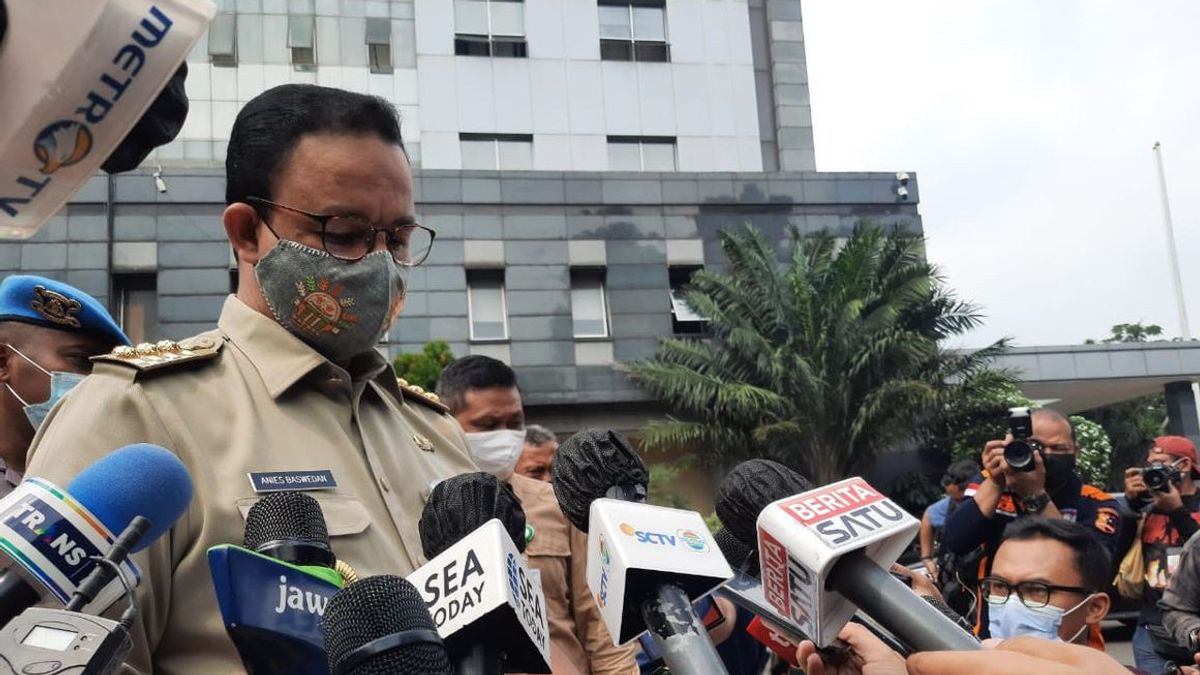JAKARTA - DKI Jakarta Governor Anies Baswedan revealed the latest conditions related to COVID-19 in the capital city. The number of COVID-19 cases in Jakarta has dropped.
"Alhamdulillah, active cases in Jakarta as of August 12 have fallen below 10 thousand cases. This active case is the number of people who are positive, who are still being treated at the hospital, or are still doing isoman. This figure is important for us to know, because it relates to the capacity limit of our health facilities," said Anies Baswedan, Saturday, August 14.
According to Anies, for almost 2 months, COVID-19 cases in Jakarta rose exponentially with a peak on July 16 of 113,137 active cases.
"We remember that when the peak was reached, all hospital rooms in Jakarta were full, not only the ICU, not only inpatient rooms, but the queues to enter the ER were long, overflowing into the hallways and Tuesdays, we even had to build emergency tents," he explained.
It takes time to reduce the number of active cases, Anies said. Thanks to the hard work of many parties, including the discipline of the citizens of Jakarta, the curve of active cases has returned to below 10 thousand in less than a month since the peak of the second wave.
“This active case can drop significantly because we can suppress the addition of new cases. Remember the analogy that I often convey, patching a leaky roof when it rains heavily. When it rains heavily and the roof leaks, putting a bucket, placing a basin below to collect dripping water is an example of our efforts to increase the capacity of hospital facilities that treat COVID, "continued Anies.
Anies also mentioned the effectiveness of the PPKM implementation which was closely monitored by Forkopimda to regional officials. The tracking of COVID-19 cases has also been increased to the isolation of COVID-19 patients.
"Now what is the impact of the decrease in new cases, the decrease in active cases, the decrease in the rate of transmission? The impact is simple, the burden on our health facilities in hospitals is reduced," he said.
Currently, according to Anies, the bed occupancy rate in hospitals is 33 percent and 59 percent in the ICU. This figure is much lower than the recommended maximum threshold by WHO, which is 60 percent.
SEE ALSO:
According to Anies, the reduction in the burden on health facilities has prevented the death of COVID-19 patients. As a result, the death rate also went down.
“Since mid-June, the number of funerals with COVID procedures has increased rapidly, reaching a peak on July 10. At that time, 400 of our brothers were buried with the COVID protocol every day. Meanwhile, COVID-19 confirmed deaths whose test results have reached the 200s every day. This is a big gap between confirmed COVID-19 and those following the COVID protocol. This wide distance shows that many residents died before the tests came out, many residents who had just arrived at the hospital facilities were already in severe condition and this also illustrates the enormous burden of our lab," said Anies.
However, the number of funerals under the current COVID-19 protocol, called Anies, has fallen to around 50 people. Meanwhile, the number of confirmed COVID-19 deaths has fallen to around 40.
"Again, 40-50 is not just a number, they are our brothers and sisters who have family, friends we love, the family we love, and every COVID-19 death is too much, we have to keep pushing it to the lowest point. This pandemic is not over yet, so we must encourage every effort to suppress the rate of transmission, including testing," said Anies.
The English, Chinese, Japanese, Arabic, and French versions are automatically generated by the AI. So there may still be inaccuracies in translating, please always see Indonesian as our main language. (system supported by DigitalSiber.id)
















